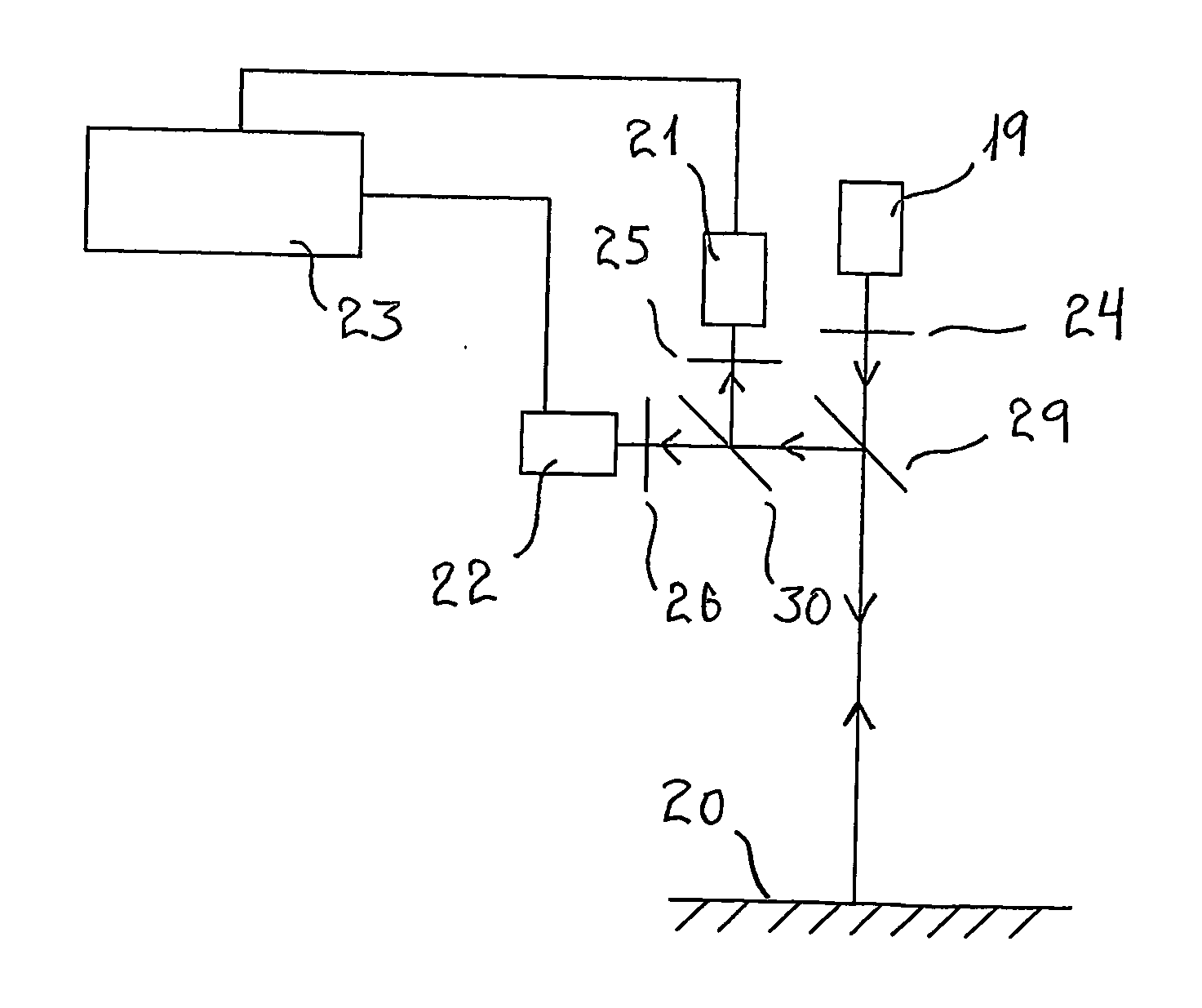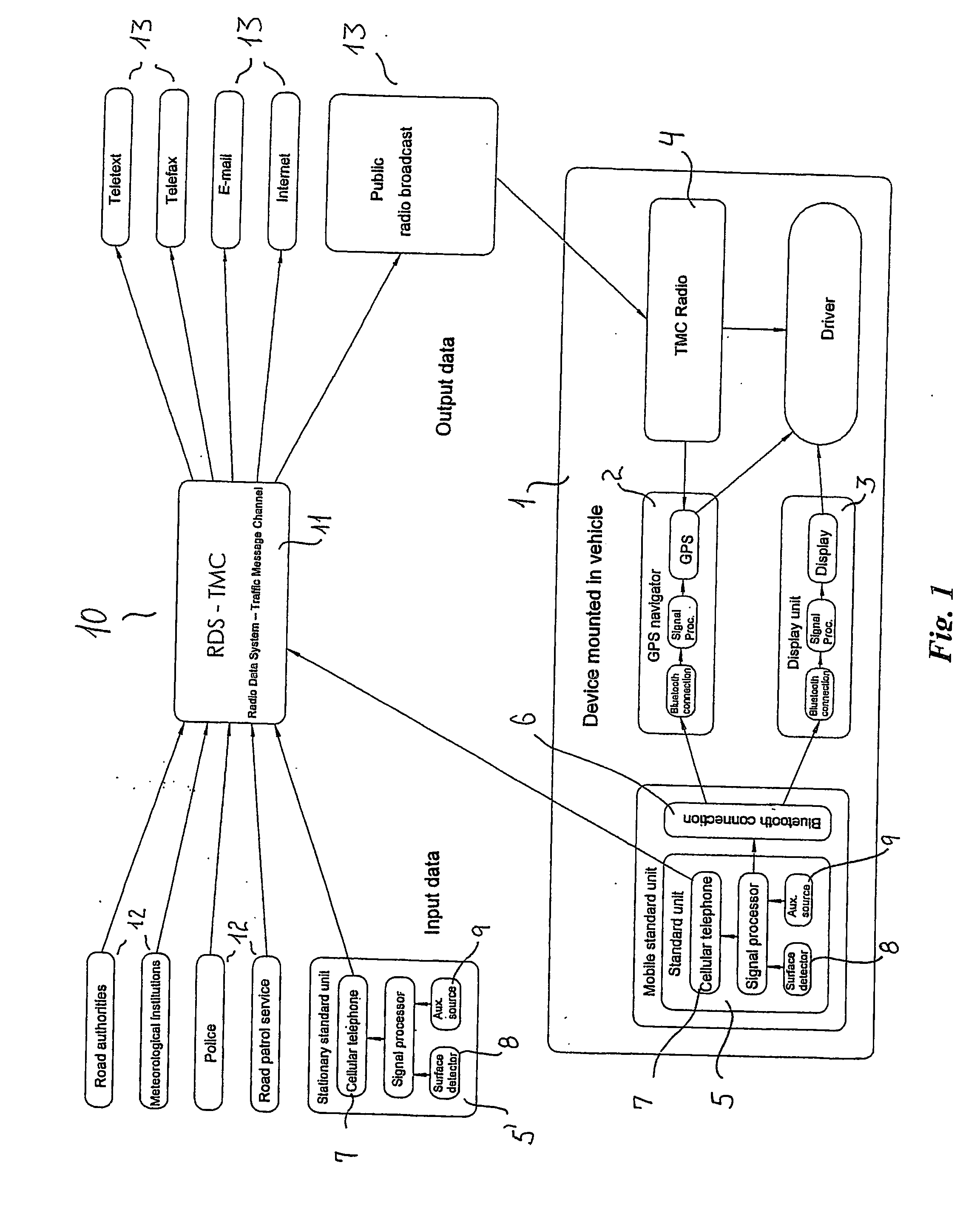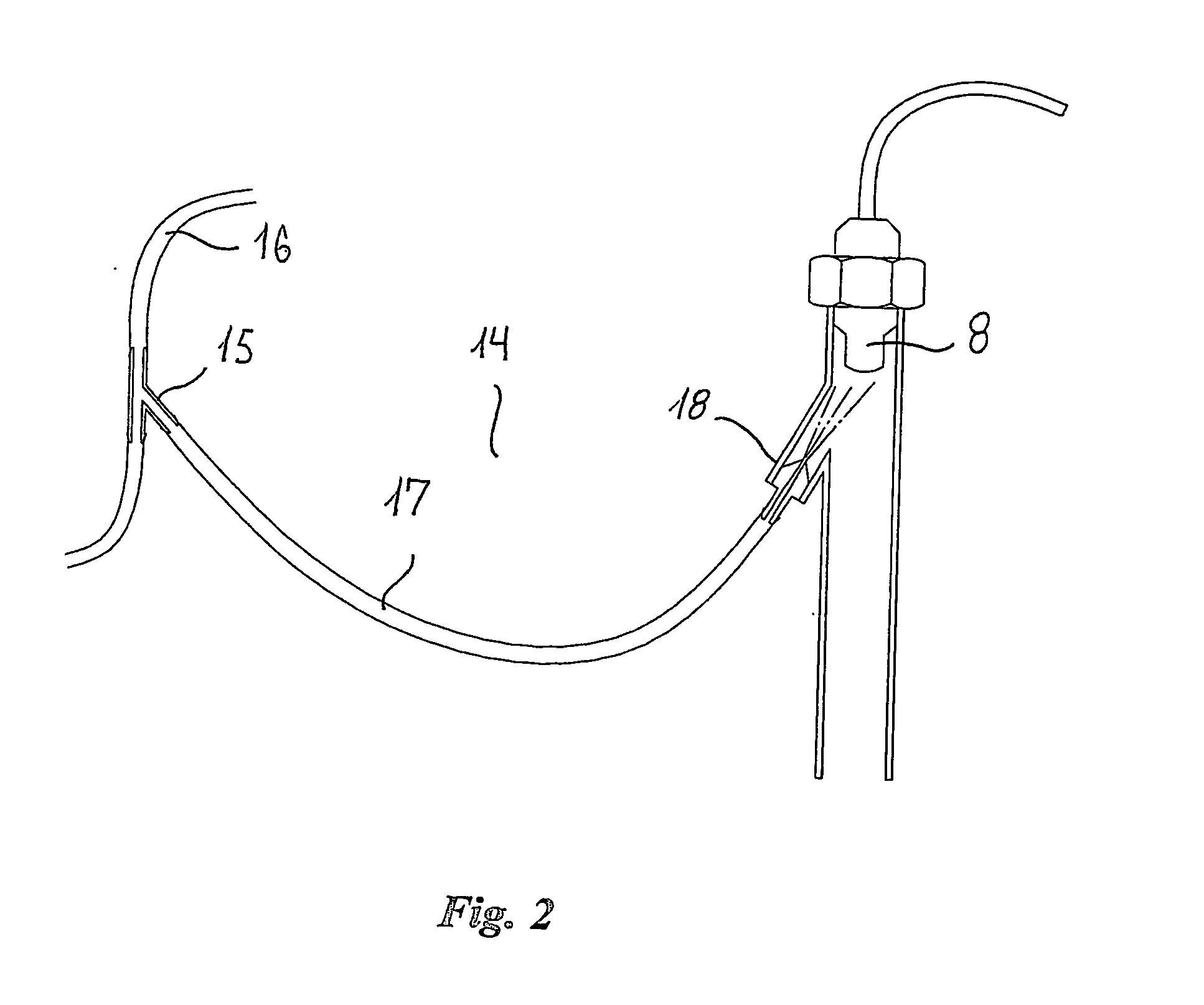Device for detection of surface condition data
a technology for condition data and devices, applied in the direction of braking systems, traffic control systems, electrical/magnetic means, etc., can solve the problems of low reliability of sensors, contaminated air between sensors and road surfaces, and the arrangement of sensors, so as to improve the reliability of detectors
- Summary
- Abstract
- Description
- Claims
- Application Information
AI Technical Summary
Benefits of technology
Problems solved by technology
Method used
Image
Examples
Embodiment Construction
[0071] The system shown in FIG. 1 comprises a device 1 for mounting in a vehicle, comprising a standard GPS device 2 used e.g. for a navigation system, a display unit 3, which also may be used for other purposes, e.g. for the navigation system, a radio 4 for receiving TMC, and a standard sensor device 5, communicating with the GPS device 2 and the display unit 3 via a wireless Bluetooth data connection 6. The standard sensor device 5 may also be used at stationary roadside measurement stations 5′. A radio transmitter 7 of the standard sensor device 5 communicates road surface property data achieved from the road surface detector means 8, from the GPS device 2 and other possible sources 9, such as the ABS, to the stationary part 10 of the system as well as to similar devices 1 mounted in other vehicles by means of transmitting the data as data packages on a common communication channel. The mutual direct exchange of data between similar devices 1 will normally be limited in distance,...
PUM
 Login to View More
Login to View More Abstract
Description
Claims
Application Information
 Login to View More
Login to View More - R&D
- Intellectual Property
- Life Sciences
- Materials
- Tech Scout
- Unparalleled Data Quality
- Higher Quality Content
- 60% Fewer Hallucinations
Browse by: Latest US Patents, China's latest patents, Technical Efficacy Thesaurus, Application Domain, Technology Topic, Popular Technical Reports.
© 2025 PatSnap. All rights reserved.Legal|Privacy policy|Modern Slavery Act Transparency Statement|Sitemap|About US| Contact US: help@patsnap.com



